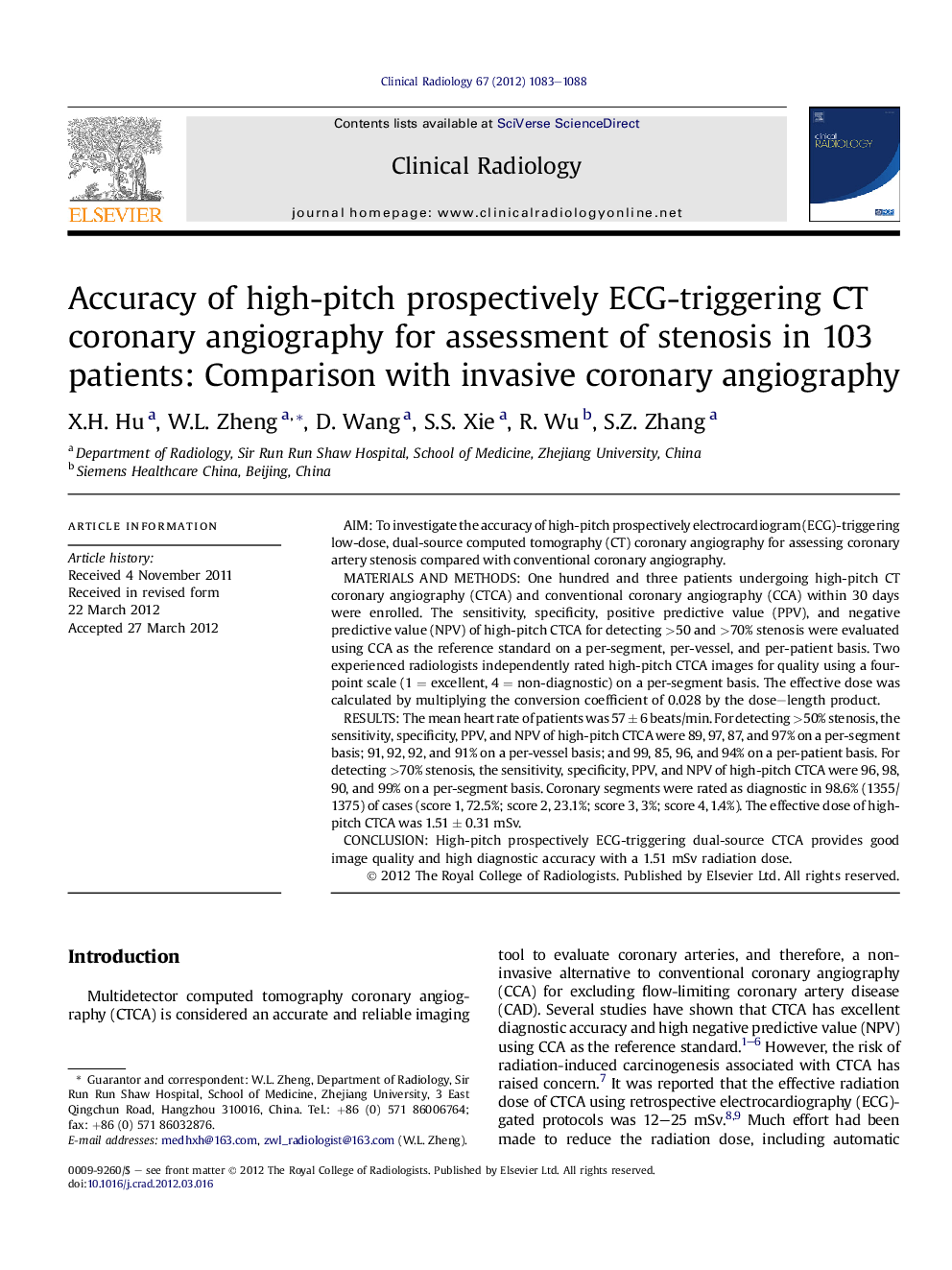| Article ID | Journal | Published Year | Pages | File Type |
|---|---|---|---|---|
| 3982842 | Clinical Radiology | 2012 | 6 Pages |
AimTo investigate the accuracy of high-pitch prospectively electrocardiogram (ECG)-triggering low-dose, dual-source computed tomography (CT) coronary angiography for assessing coronary artery stenosis compared with conventional coronary angiography.Materials and methodsOne hundred and three patients undergoing high-pitch CT coronary angiography (CTCA) and conventional coronary angiography (CCA) within 30 days were enrolled. The sensitivity, specificity, positive predictive value (PPV), and negative predictive value (NPV) of high-pitch CTCA for detecting >50 and >70% stenosis were evaluated using CCA as the reference standard on a per-segment, per-vessel, and per-patient basis. Two experienced radiologists independently rated high-pitch CTCA images for quality using a four-point scale (1 = excellent, 4 = non-diagnostic) on a per-segment basis. The effective dose was calculated by multiplying the conversion coefficient of 0.028 by the dose–length product.ResultsThe mean heart rate of patients was 57 ± 6 beats/min. For detecting >50% stenosis, the sensitivity, specificity, PPV, and NPV of high-pitch CTCA were 89, 97, 87, and 97% on a per-segment basis; 91, 92, 92, and 91% on a per-vessel basis; and 99, 85, 96, and 94% on a per-patient basis. For detecting >70% stenosis, the sensitivity, specificity, PPV, and NPV of high-pitch CTCA were 96, 98, 90, and 99% on a per-segment basis. Coronary segments were rated as diagnostic in 98.6% (1355/1375) of cases (score 1, 72.5%; score 2, 23.1%; score 3, 3%; score 4, 1.4%). The effective dose of high-pitch CTCA was 1.51 ± 0.31 mSv.ConclusionHigh-pitch prospectively ECG-triggering dual-source CTCA provides good image quality and high diagnostic accuracy with a 1.51 mSv radiation dose.
